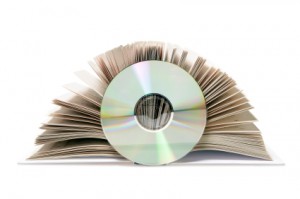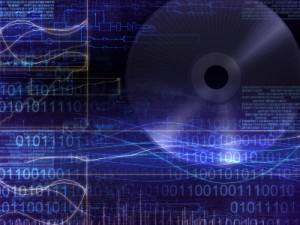It may seem like a contradicting thing to say that books and DVDs go well together considering that each seems to encourage separate aspects of the human. While DVD are visually and aurally stimulating, packing with quick information that takes no effort to take in but which can quickly hook you in emotionally and psychologically, a book is a slow-burning, highly informative volume which focusses a little less on the powers of empathy and far more in employing the resources of the imagination.
However, recent studies have shown that these two such contrasting products are mutually beneficial when placed upon the market in a package. In fact, these packages have even developed their own niche – the ‘kit’ market’. Often, these ‘kits’ are one off and best-sellers, for instance the book/DVD combination on Barak Obama, Barak Obama – Words That Inspired A Nation: Essential Speeches 2002 to the Inauguration. But recently there has also been a whole host of kits brought out annually, often related to bands or magazines.
The book on Barak Obama was in danger of falling into the highly intellectualised, dry realm of academia but the accompanying DVD brought it to life and expanded the consumer market considerably. As Brian Brodeur, one of the key figures in the book’s video-editing process, says, “The DVD and package made all the difference… I don’t think a book of speeches is going to do those kinds of numbers. The value-add of the DVD is what put it over the top.” And it’s true; rather then selling a few copies to a small market of consumers with very scholarly attitudes, the DVD allowed the book to appeal to the average Joe. The kit sold 7,500 copies in its first two months of sale alone!
So, a DVD can obviously help a book to sell, but is the reverse true: When approaching DVD duplication services, should we also approach a publishing company alongside to create a book for our DVD?
The evidence suggests that the market is open and eager for more such kits, the multimedia content appealing to a greater audience and adding value above the value of the product alone. This has been seen with several more DVD-based kits. For a start, the back-copy DVDs of Rolling Stone and Playboy magazine. Each company approached Bondi Digital Publishing in New York, hoping to create a DVD of all the issues of their magazines since beginning of print. For Playboy, this went all the way back to 1953, while for Rolling Stone a more modest 1967. Still, both jobs were massive undertakings, with each page of each edition of the magazine needing to be scanned and digitalised.
It was posited that a book of the company’s respective histories should be published in conjunction with these DVDs, forming a kit, and there is no doubt that this decision on the DVD duplication services part added to the overall value of the product, combining two new and interesting collector’s items in one kit. As David Anthony, Bondai Digital’s president, recalls, “It began as a DVD-ROm only software product, but then we realised that adding a book would give us more retail reach.” The Playboy DVD kit also came with a re-print of the first edition of the magazine ever sold. These kits have, according to David Anthony, ‘met sales expectations’, which were high in the first place!
More unusual formats, for instance Esteban’s famous guitar lesson DVD/ book kits, are becoming available as well. Esteban’s kits are rumoured to sell more copies per year then the guitars the two giants of the instrument world, Fender and Gibson, sell per annum – combined! He must be a very happy man, as must his DVD duplication services be!
So, what are the issues with these top-selling kits? Well, to start the packaging can be a nightmare to conceptualise. What do you do with a DVD that needs to look like a book in a bookstore and a book that needs to look like a DVD on the shelves of HMV? But, as more and more kits come onto the market, more ideas are coming through and it is becoming ever-easier to piece together a product which looks classy and original.
The other problem many DVD duplication services encounter in the process of creating these products, is that the publishing and DVD duplicating worlds know very little about one another. This makes collaborating tricky, but can be incredibly successful, each business learning a bit about the other, and each one complimenting the other with the services they provide. The difficulties come when sourcing data for the product: During the Obama kit’s production, Barnes and Noble are said to have sourced some very poor quality film of the president’s speeches, which had to be re-sourced and acquired all over again!
However, this problem too has been fading with time, as each industry learns more about the other they are better able to collaborate and come out with some very stylish kits. As Brodeur says, “I think one of the reasons we’ve been putting together some great kits is because we now know more about what the other [industry] does.”
So, with issues in the production process which are constantly becoming less of a problem and a wide market eager to consume your product, why not consider making a kit next time you approach DVD duplication services? The profits are higher than the input by far and you would be helping a new and exciting variation on products get up and running!


